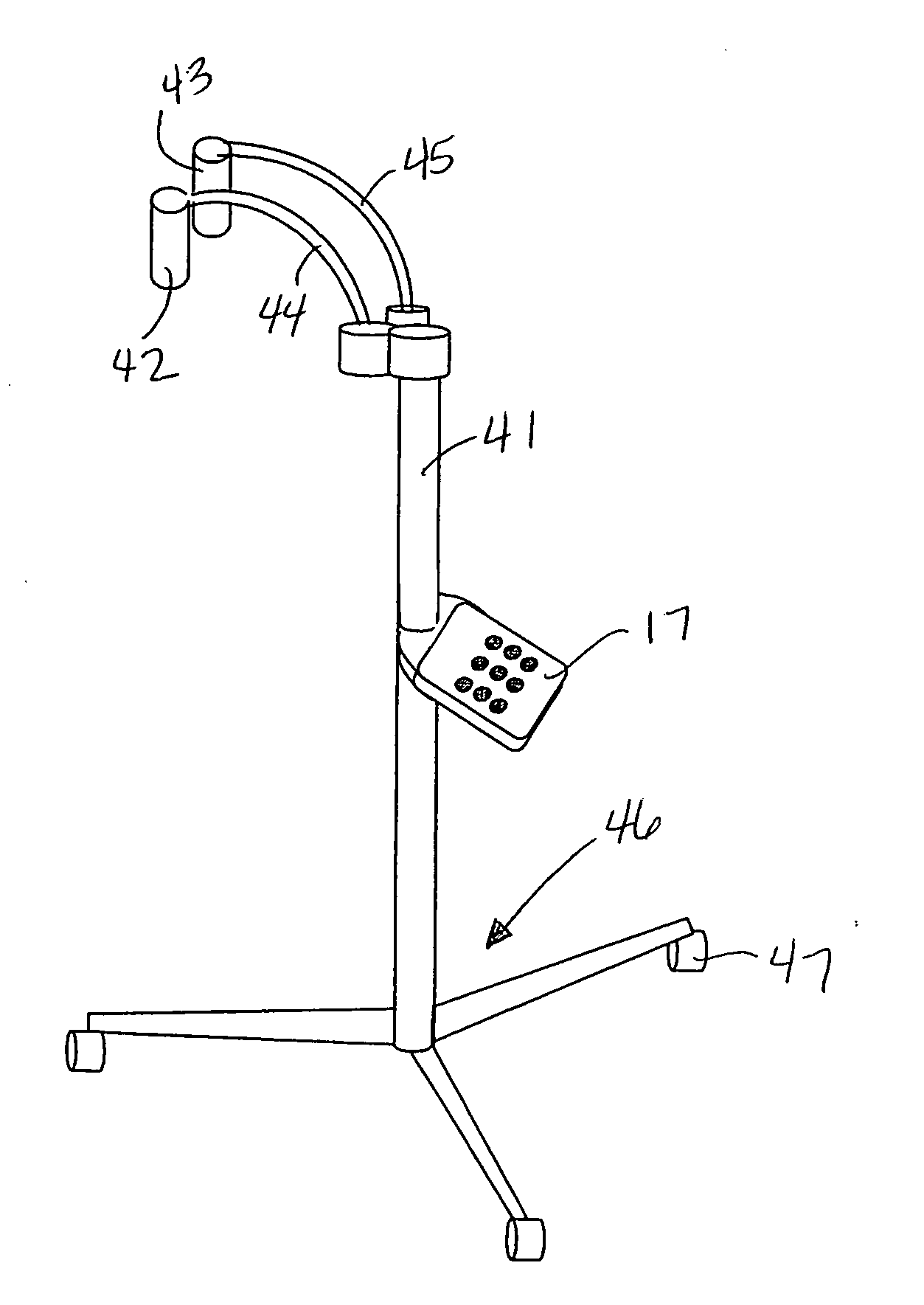Stand-alone scanning laser device
a laser light and laser light technology, applied in the field of medical and chiropractic devices, can solve the problems of large number of laser diodes, large mechanical requirements to achieve a rotating helmet, and devices that use relatively high-level laser energy, and achieve the effect of stimulating hair growth and low level
- Summary
- Abstract
- Description
- Claims
- Application Information
AI Technical Summary
Benefits of technology
Problems solved by technology
Method used
Image
Examples
Embodiment Construction
[0027]FIG. 1 illustrates a schematic of a laser device that includes a power source 12, at least one laser energy source 11, a laser control 13, a scanning head 14, and a scanner control 15. In the preferred embodiment, the laser control 13 and scanner control 15 are incorporated into a control means 17. The power source preferably provides direct current, such as that provided by a battery, but may instead provide alternating current such as that provided by conventional building outlet power (120V) that is then converted to direct current. The power supply 12 may be housed with the scanning head 14 or may be deployed separately with an electrical cable joining it thereto. Laser control 13 is connected to the laser energy source 11 and acts as on / off switch to control the period of time the laser light is generated and may also have other functions, such as controlling the pulse repetition rate. Other functions of the laser control 13, scanner control 15, and control means 17 are m...
PUM
 Login to View More
Login to View More Abstract
Description
Claims
Application Information
 Login to View More
Login to View More - R&D
- Intellectual Property
- Life Sciences
- Materials
- Tech Scout
- Unparalleled Data Quality
- Higher Quality Content
- 60% Fewer Hallucinations
Browse by: Latest US Patents, China's latest patents, Technical Efficacy Thesaurus, Application Domain, Technology Topic, Popular Technical Reports.
© 2025 PatSnap. All rights reserved.Legal|Privacy policy|Modern Slavery Act Transparency Statement|Sitemap|About US| Contact US: help@patsnap.com



